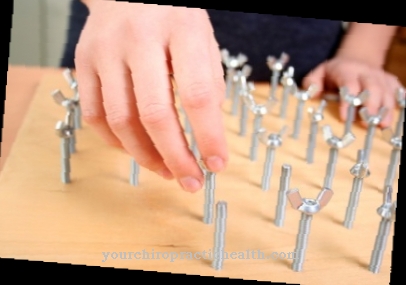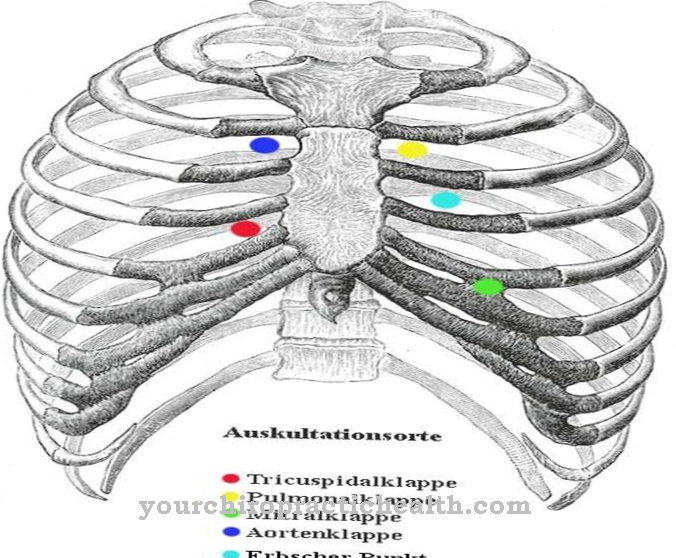The following is a definition, the causes, the diagnosis and possible course for the Enchondroma be named. In addition to the possibilities of therapy and forms of prophylaxis, further useful information about this benign form of the bone tumor is shown.
What is an enchondroma?
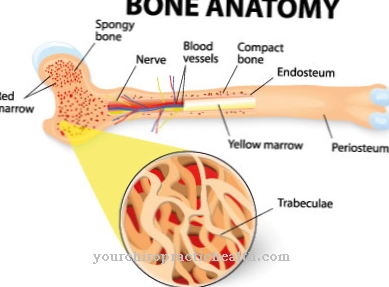
© designua - stock.adobe.com
The enchondroma is initially a mostly harmless form of tumor disease in the area of the cartilage mass of the human bone. The enchondroma is always benign.
Therapy is not absolutely necessary - close observation of benign cell degeneration should, however, be guaranteed in most cases. This form of cell proliferation occurs most frequently between the ages of 20 and 40.
Often one happens to come across the mostly painless enchondromas by chance during the X-ray. They are usually located in the thin long bones. However, if enchondromas are found in various places in a body, one speaks of certain syndromes, whereby with this diagnosis, a malignant development of the tumor disease is to be expected significantly more often.
causes
The causes of enchondromas have not been finally clarified and ultimately some scientists assume that in the case of cartilage tumors it is probably the embryonic remnants of the growth plate.
You can find your medication here
➔ Medicines against swellingSymptoms, ailments & signs
An enchondroma is usually associated with very few complaints and symptoms. For this reason, the disease is diagnosed and treated relatively late. Those affected primarily suffer from swelling. These occur mainly on the fingers or hands, but are not associated with pain.
Pain is very rare in enchondromas. The tumor is usually only discovered by chance. The enchondroma does not cause any further complaints. However, if the disease progresses unfavorably, the tumor itself can also spread in the body, which can lead to metastasis. Tumors form in various parts of the body, which usually lead to the death of the person concerned.
An enchondroma can also lead to a thickening of the bone. The swelling increases and pain can occur. As a result of the pain, many patients also suffer from restricted mobility and thus significant restrictions in everyday life, which leads to a significantly reduced quality of life. As a rule, an enchondroma can be removed relatively well and without complications if diagnosed early. However, it is not possible to make a general prediction about the life expectancy of the person affected.
Diagnosis & course
In the case of the enchondroma, as already mentioned, the patient rarely suffers from pain. Usually the benign, that is, the benign tumor is diagnosed by x-ray for other reasons, i.e. randomly.
Imaging methods are primarily used as a diagnostic method. In addition to X-rays, computer tomography, MRI, and less often scintigraphy are used. A biopsy is only performed in doubtful cases. During a biopsy, a tissue sample is taken from the affected cartilage mass with a needle-like instrument. The tissue sample is then examined in the laboratory to rule out that it is a malignant, i.e. malignant, cartilage tumor. Then, when life-threatening chondrosarcoma is finally diagnosed, other treatment steps are taken.
The enchondromas are most common, around two-thirds of them, in the fingers. More precisely, they are the long tubular bones of the fingers. Benign tumors in the foot area, the toes, are less common. The calcifications on the cartilage mass can also be diagnosed on the pelvic vane, on the femur, i.e. the thigh bone, on the humerus, i.e. on the humerus.
If enchondromas occur closer to the trunk, they should be removed thoroughly. It was observed that the location of the cartilage tumors has a certain influence on whether malignant chondrosarcomas can develop from benign enchondromas. Enchondromas grow rather slowly and remain unnoticed by the body. Nevertheless, it must be ruled out that the cell degeneration is not a malignant tumor.
If it is a syndrome related to the enchondroma, that is, if the phenomenon is too frequent, the attending physician should also be a lot more vigilant against malignant tumor development. To name two syndromes in which there is a multiple occurrence of enchondromas, Ollier syndrome and Mafucci syndrome should be mentioned. In both cases, degeneration into a chondrosarcoma can become probable.
Complications
In most cases, there are no complications with an enchondroma. The symptom only needs to be treated in very few cases and does not represent a health complication for the patient. Only in a few cases is the patient affected by pain which he often does not immediately know to assign to an enchondromic disease.
If there is pain, it is usually not particularly severe. Occasionally the bone can thicken and movement can be restricted. This reduces the patient's quality of life. The overgrowth can also cause more pain, and the enchondroma must be treated.
The treatment itself takes the form of a surgical procedure and aims at the complete removal of the tumor. Most of the time, the patient still has to have check-ups after the procedure in order to prevent the tumor from developing again. An enchondroma does not reduce life expectancy if the cancer does not spread to other parts of the body. After the treatment, the movement restrictions disappear completely, so that there are no further complications.
When should you go to the doctor?
An enchondroma is usually a benign growth on the bone so that medical and drug treatment does not have to be carried out immediately. Most of the time, enchondromas develop on the finger or toe bones, although the formation of an enchondroma elsewhere cannot be excluded. Since an enchondroma belongs to the group of tumors, it should always be examined by an appropriate doctor.
Only through such treatment can it be determined whether the tumor is benign or malignant. If it turns out that it is a benign tumor, no subsequent treatment by a doctor is necessary. As long as there are no changes in terms of size, discoloration or pain, you may not see a doctor. However, if a change occurs, going to the doctor should not be put off the back burner. The first signs of change should be examined by a doctor as soon as possible.
Doctors & therapists in your area
Treatment & Therapy
In many cases, an enchondroma is completely harmless and can often be left without treatment. Nevertheless, it is often advised to observe the bone area, because the risk of chondrosarcoma can remain latent.
Therapy is thus done after an imaging diagnosis and, in case of doubt, with the addition of a tissue sample from the bone, primarily with the attending physician observing. However, if the enchondroma grows into a malignant chondrosarcoma, a cartilage cancer, bone mass is surgically removed and replaced with tumor endoprostheses.
These are mostly artificial joints that guarantee a high level of comfort. However, malignant cartilage cancer occurs very rarely in the finger bones.
Outlook & forecast
The prognosis of the enchondroma depends on the course of the disease and other previous illnesses. There are patients who, despite the cartilaginous tumor, do not experience any impairments in everyday life and are free of symptoms. In these cases no treatment is necessary and the patient can continue his or her life until he dies with the enchondroma. A shortening of the lifetime is not to be expected.
If a malignant tumor is diagnosed, surgery is often carried out to remove the mutated cartilage. Depending on the size of the enchondroma, follow-up treatments or therapies are necessary so that the range of motion can be improved. There is a possibility of a cure. Nevertheless, permanent damage can also occur that cannot be treated.
In severe cases, artificial joints or bones are placed in the patient to improve mobility. In addition, the enchondroma can be due to an underlying disease. These syndromes are called enchodromatoses and need to be diagnosed and treated.
The patient then receives an assessment of the prospect of recovery. If the person concerned suffers from other bone or joint diseases, their prognosis worsens. A cure cannot be assumed for a chronic illness. With all possible forms of enchondroma, regular check-ups are necessary in order to assess changes and react immediately.
You can find your medication here
➔ Medicines against swellingprevention
Since the causes are almost unknown, only general prophylactic measures can be recommended. A healthy lifestyle as well as the renunciation of carcinogenic poisons such as tobacco consumption and the like are advisable. A varied cuisine, enough exercise outdoors and paying attention to mental balance always have a positive effect on good vitality.
Aftercare
In the case of an enchondroma, the options for follow-up care prove to be relatively difficult in most cases. The focus is also on the direct and medical treatment of the person affected by a doctor in order to completely treat and remove the tumor. Early diagnosis and treatment are also very important to prevent further spread of the tumor in the body.
Even after successful treatment of the enchondroma, regular examinations should be carried out in order to identify and treat other tumors at an early stage. In most cases, the enchondroma can be treated with surgery and completely removed. There are no other particular complications. After the procedure, however, the patient should always rest and take care of his body.
Here, exertion or other stressful activities should be avoided in order not to slow down the healing process. With enchondroma, those affected often rely on support from friends and family. Intensive discussions can be very helpful, especially with psychological complaints. In most cases, the enchondroma can be removed relatively easily, so that the patient's life expectancy is not reduced.
You can do that yourself
Those affected by the benign cartilage overgrowth rarely complain of symptoms and complaints. The benign nature of enchondromas also speaks against the need for a therapeutic approach. Nevertheless, even after surgical removal of the cartilage tissue, those affected should consult their doctor regularly in order to be able to identify a possible new formation at an early stage.
A degeneration of the actually harmless tumor into a malignant bone tumor can also be determined or excluded in good time in regular screenings. For this purpose, patients should undergo an X-ray examination once a year to clarify the findings.
Surgical removal of the tumor tissue is indicated for more pronounced swellings that lead to pain and major restrictions in everyday life. Patients who have decided against an operation should adjust their way of life accordingly and avoid unnecessary risks due to higher stress on the respective bone area.
Because enchondromas contribute to a weakening of the bone strength and increase the risk of fractures in the affected areas. Therefore, high-risk sports as well as higher, overly one-sided physical stress in leisure and work should be avoided.
The same applies in particular after an operation that warns the affected area to be immobilized as much as possible for a few weeks. The healing process of the irritated nerve pathways runs faster, the longer and more consistently the operated region is spared.

.jpg)


.jpg)
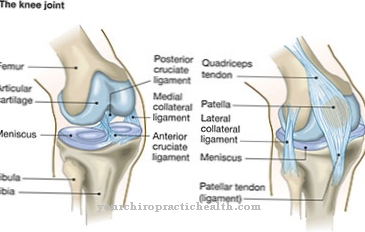
.jpg)





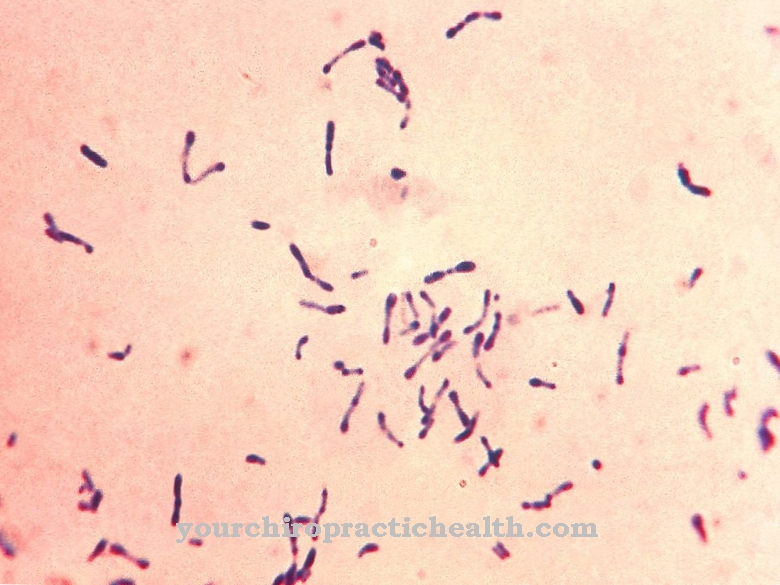
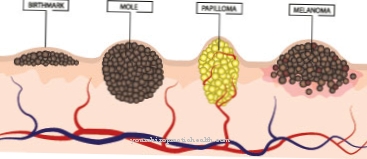

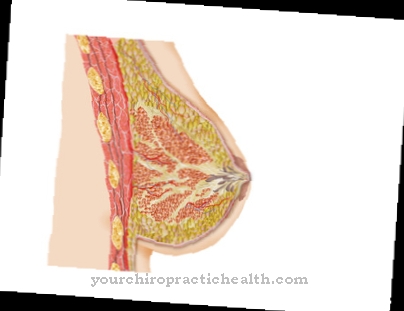







.jpg)
.jpg)
